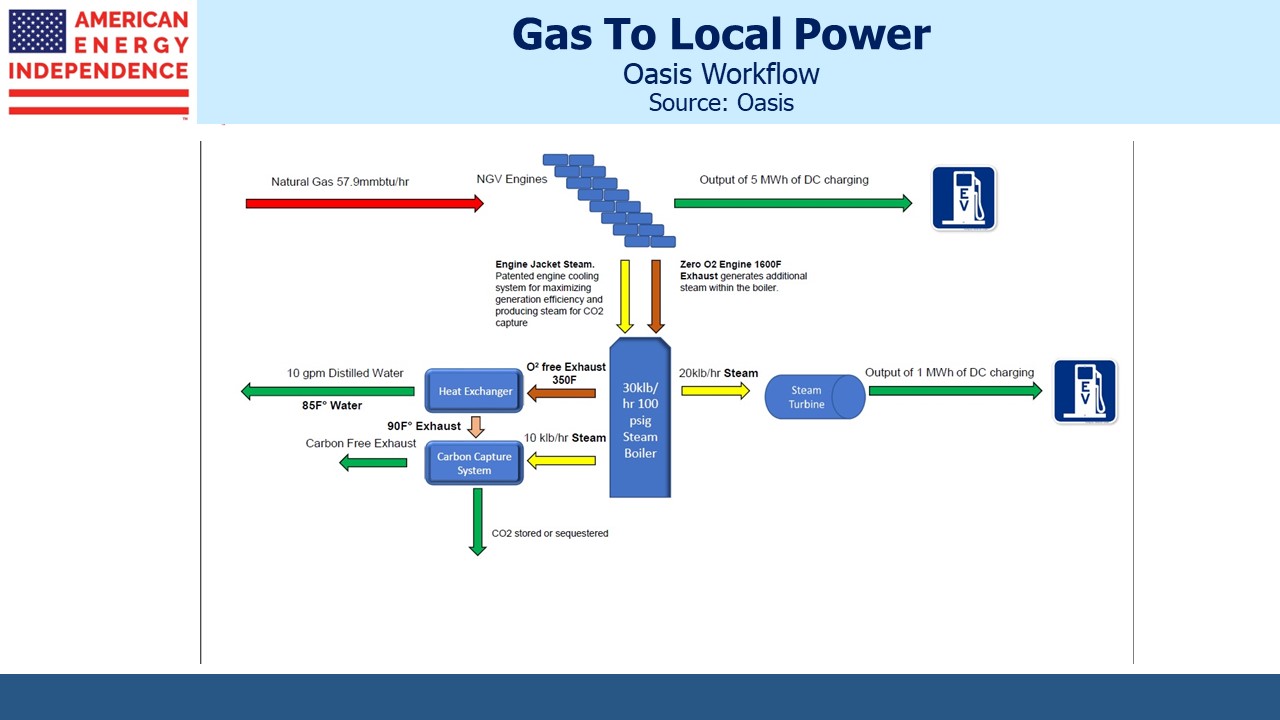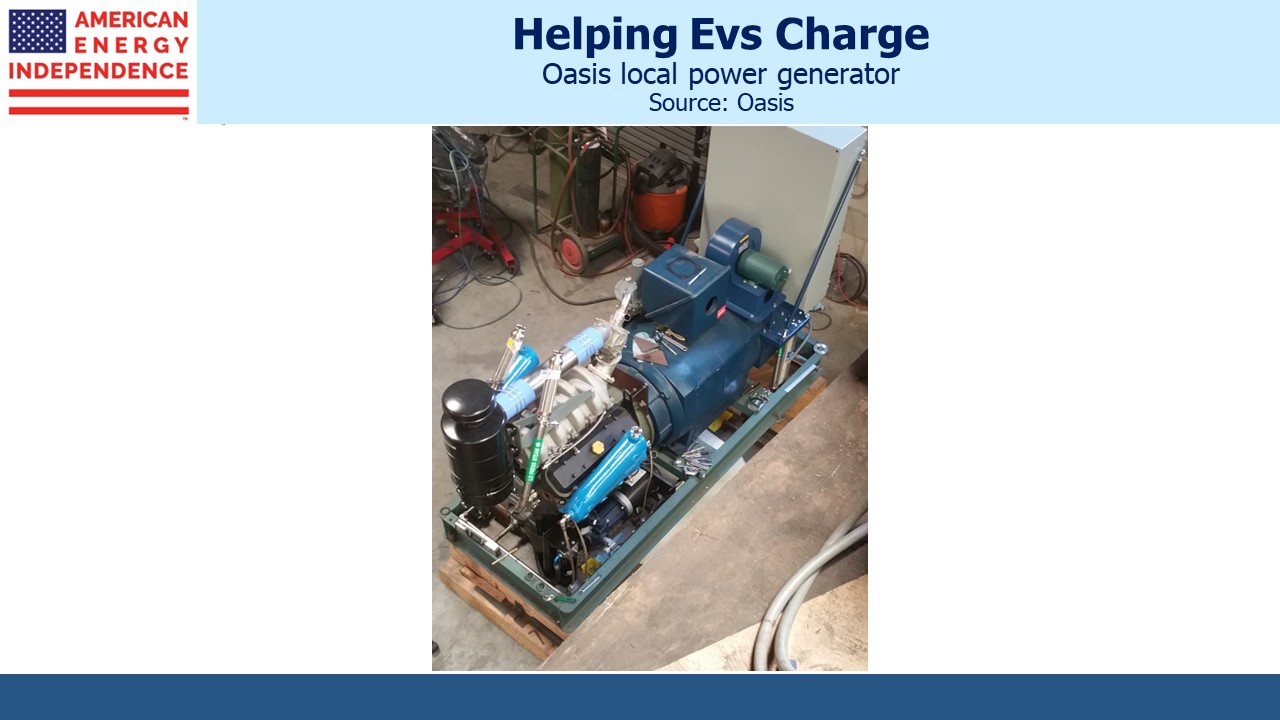Does the Future of Electrification Rely On Natural Gas?
Electric Vehicle (EV) penetration in the US is slower than many other countries. Sales of EVs and hybrids reached 5% market share last year, compared with 16% in China and 17% in Europe. US auto ownership is among the highest in the world, at 875 per 1,000 people.
But relatively cheap gasoline weakens the cost competitiveness of EVs, as well as enabling Americans to average twice the annual miles as Europeans and over three times Japan. In addition, Americans favor bigger vehicles. with light trucks and SUVs around three quarters of sales. California dominates US EV sales, with almost 40% of US-registered EVs.
Charging is an impediment to faster adoption – both access to charging stations and the time required. Oasis Microgrids is a start-up co-founded by a former colleague of mine at JPMorgan who believes they have a solution.
We have no investment in or affiliation with Oasis – it’s just interesting to see the range of initiatives that are being pursued in support of the energy transition. Here we are, as described by co-founder and CEO Michael Lawson in his own words:
Oasis Microgrids has a game changing plan to revolutionize the Electric Vehicle (EV) fast-charging model currently in place in the United States. Able to produce its own Direct Current (DC) electricity independent from the electric grid, our prototype design can power multiple DC fast charging stations, up to 300 Kilowatt Hours (kWh) each, concurrently.
DC power is produced using natural gas, or renewable natural gas where adequate supplies are available, via patented technology. We expect California will maintain support for natural gas where it supplies industries that are hard to electrify. When combined with carbon capture, we envision our carbon neutral fast-charger offering will proliferate nationally, supporting higher EV adoption rates. Carbon credits should offset the costs of capture and sequestration.
At Oasis we believe that locally produced DC using natural gas will be a cost-effective solution to compete favorably with utility connected and renewables-based EV fast-chargers.
The outputs of the Oasis design are DC power, CO2 and almost pure distilled water. Oasis Microgrids anticipates that a single 6.5 Megawatt Hours (mWh) facility will produce about 1,500 metric tons of CO2 for sequestration and over 140-acre feet of water, enough to supply around 75 households.
Most EV owners state slow public charging with uneven availability as the reason their next auto purchase will not be an electric vehicle. As we see it, the headwind against fast charging is clearly the limitation of the electrical grid. A single DC fast charging station comparable to our 300 kWh fast charger requires a 600-amp service which is radically challenging when the grid barely has enough electrical capacity to keep industry and air conditioners running right now.
California recently passed legislation that eliminates sales of internal combustion engine cars by 2035. Experts agree the state will need to at least double the current electric power supply to meet the increase in EV charging alone. Pursuing total electrification in the residential sector will require further expansion of the electrical grid – a most costly endeavor.
Every community and lifestyle will benefit from our network of green, convenient, reliable and grid-independent DC fast charging stations. And with our plan to include food, services and amenities in these stand-alone locations we plan to recharge you while your car is recharging too.
Fleet charging for companies with large distribution networks, including Amazon, Walmart, FedEx and the USPS, are another potential source of demand for Oasis.
We thought this presented an interesting perspective of the type of innovation that is going on in support of electrification.
To learn more, visit their website (oasismicrogrids.com)

